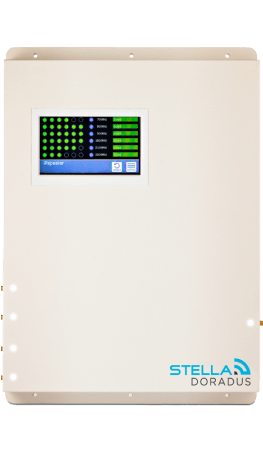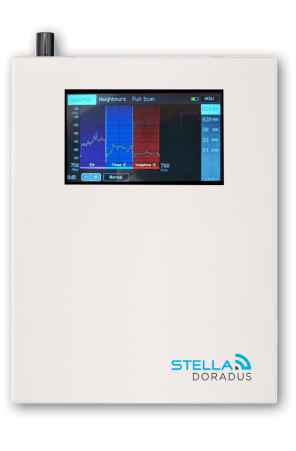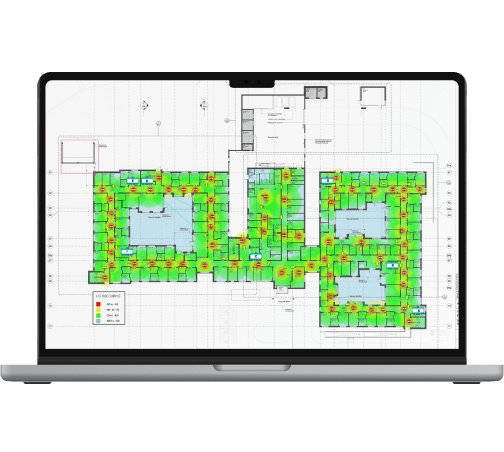Mobile phone booster installation guide
In this article, I will discuss the topic of “antennas” for repeater installations.
This guide will explain how to install mobile phone repeaters in big buildings and homes.
After reading this article, you will understand what type of internal antennas to use for the building, where best to place these antennas, and how far apart they should be.
What type of internal antennas to use.
Stelladoradus offers 3 types of internal antennas. The panel, the omni and the Yagi.

Panel
The Panel antenna can be mounted on a wall pointing into a room or down a corridor.
It should be placed above head height, and tilted downwards a little. This will focus the main beam of energy to where people are sitting or standing. It has a 60deg beamwidth and a gain of 6dBi. It has a coverage area of about 20m X 20m. The coverage will be greater in rural locations compared to cities. We will discuss this in more detail later.
The panel antenna can also be installed on ceilings, pointing directly downwards. See image below. This can be useful in factories with high ceilings.

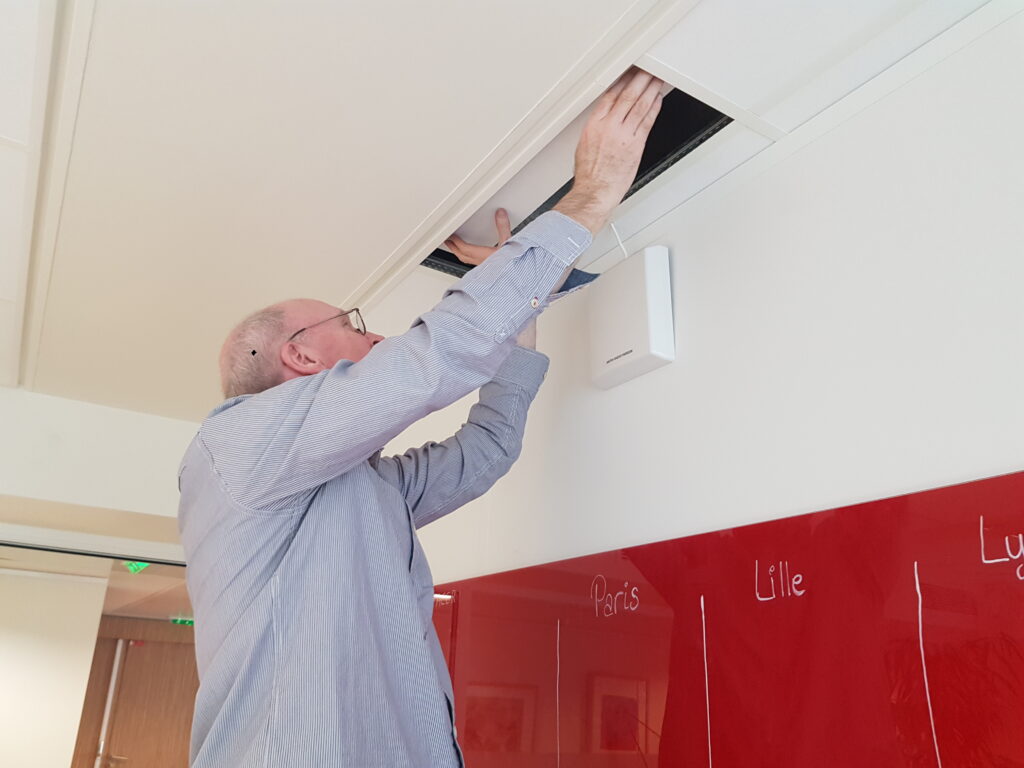
Ceiling Mount Omni
This antenna is suitable in office blocks with false ceilings. The gain is about 2dBi with a radiation pattern like a doughnut. This means that directly underneath this antenna, there is a low signal. It is only during your testing that you should be aware of this low signal directly underneath the antenna. In practice, it will not be noticed by users.
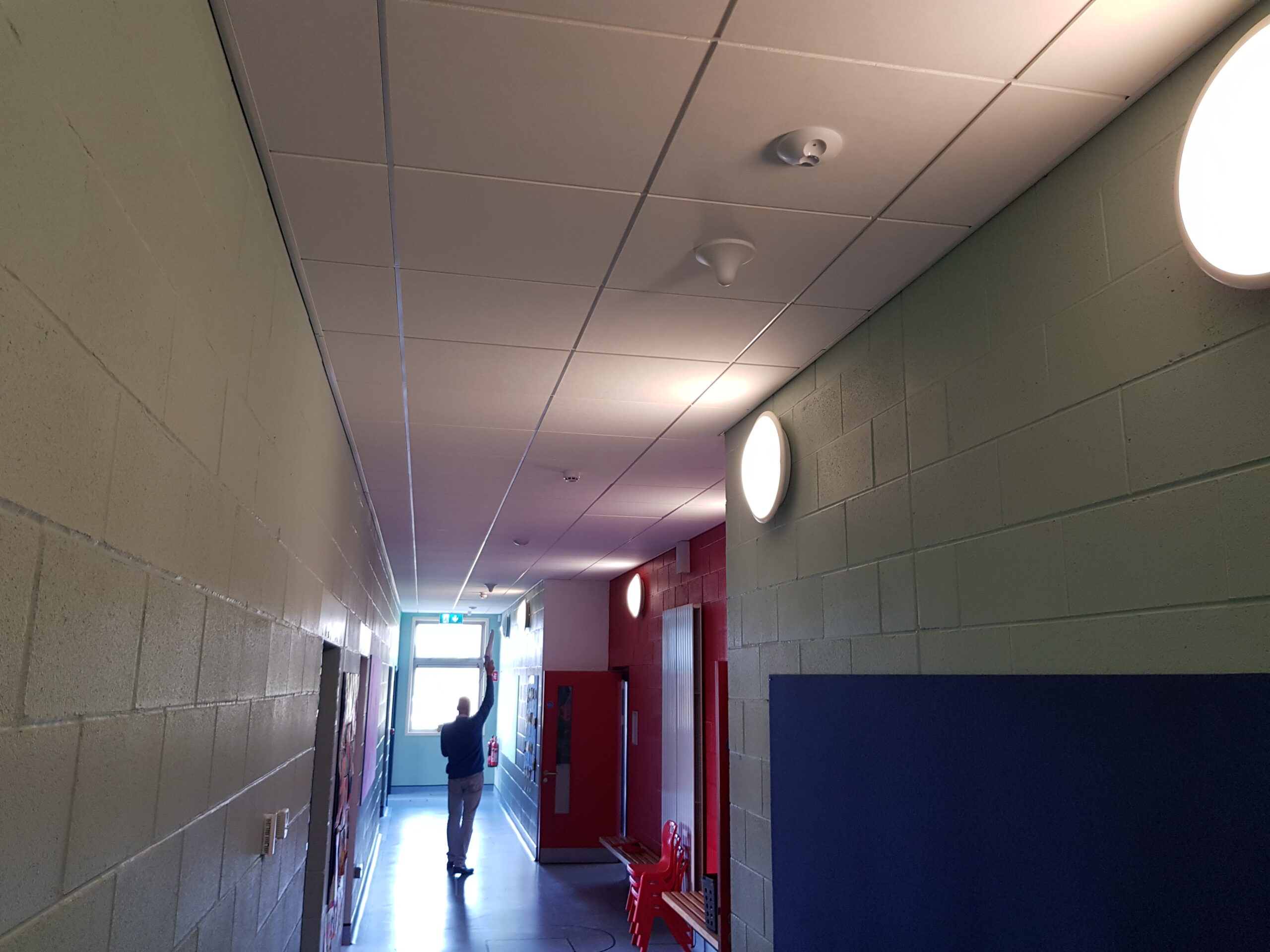
Yagi
The Yagi is usually used outside on the roof. However, it can also be used in certain situations inside. Examples of where it can be used successfully inside are:
- Long passages with high shelving inside big factories.
- Certain areas on a factory floor to focus the beam.
- Tunnels.

Distance between internal antennas.

The distance between antennas inside a building depends on several factors. Here are 3 main factors:
1- Are you in the countryside or city?
By countryside, I mean that there are less then 5 mobile towers in your area. In the city there will be perhaps 10-100 base stations around your building.
However, if you are in the countryside (and the signal is good on the roof), then you can place your antennas up to 30m apart.
In a city you will need to reduce the distance between your internal antennas to 15m (irrespective of the signal power on the roof).
So, as you can see, there is quite a big difference between city and countryside installations.
2- Have you strong signal on the roof? (Countryside only)
This applies to the countryside only. You can consider full bars on your phone as strong signal, as a rough measurement. The stronger the signal on the roof of a building in the countryside, the greater the distance apart you can place your antennas, up to a maximum distance of 30m.
Sometimes the signal is very poor (3 bars on your phone) in the countryside on the building roof. In this case, the antennas should be placed 15m apart.
3- Do you require low frequency signal (800/900MHz ) or high frequency (2100/2600MHz)
Some installations do not require 1800, 2100 and 2600MHz, and as a result, these type of installations are generally much easier. In the countryside sometimes only 800MHz and 900MHz exists. You will require less internal antennas in this case, and therefore less equipment (repeaters/line amps).
Location of antennas, columns, ceilings, walls.
Panel antennas are usually installed on walls, above head height. If they are installed more then 1m above head height, then tilt the antenna downwards, a little, to focus the main energy of the antenna down towards phone users.
Keep the antennas clear of any nearby metal objects as these metal objects will attenuate and distort the signal.
When choosing where to locate your antennas, prioritize important rooms, like meeting rooms, and the boss’s office:)
Antennas can be placed in corridors and the signal will pass from these antennas, through wooden/plastic/glass doors, to the rooms off this corridor. See image below.

Cities, tall buildings with natural signal leaking inside. Where best to place antennas?

One of the most tricky installations happens in tall, old buildings in large cities.
The reason for this is that mobile signal is already “leaking” into this type of building. These older buildings are not highly insulated (do not have metal backed insulation in the walls). The windows may be old also (no metal oxide layer). And so, mobile signal can leak into the building from the outside.
However, the problem is that often, this natural signal is not strong enough or is too distorted to achieve a good quality mobile voice call.
A properly installed repeater system should be able to “overcome” this poor quality signal.
One key aspect of the installation in these types of buildings, is to place the indoor antennas near the windows. This will ensure the phones will connect through these antennas rather than the signal entering through the windows.
Final Testing of antennas – with spectrum analyser
After your installation is complete, I advise you to check all of the internal antennas. The best way to do this is with a spectrum analyzer and a Yagi antenna. Stella Doradus engineers designed in-house our own Test Tool. Point the Yagi antenna at an antenna 2m away. Measure the signal power on your spectrum analyser. Remember, you are measuring across the full band. Measure the same band for all antennas.
For example, if you are measuring the 2100MHz band, then the band starts at 2110MHz and ends at 2170MHz (70MHz bandwidth). You are then looking at the average power across this full spectrum. Here is what it might typically look like (image below)..in this case the average power is around -60dBm. This would be considered a strong signal.
If you find one particular antenna exhibiting a much lower signal power, you know there is an issue with that antenna. Usually the fault is a poorly assembled connector.
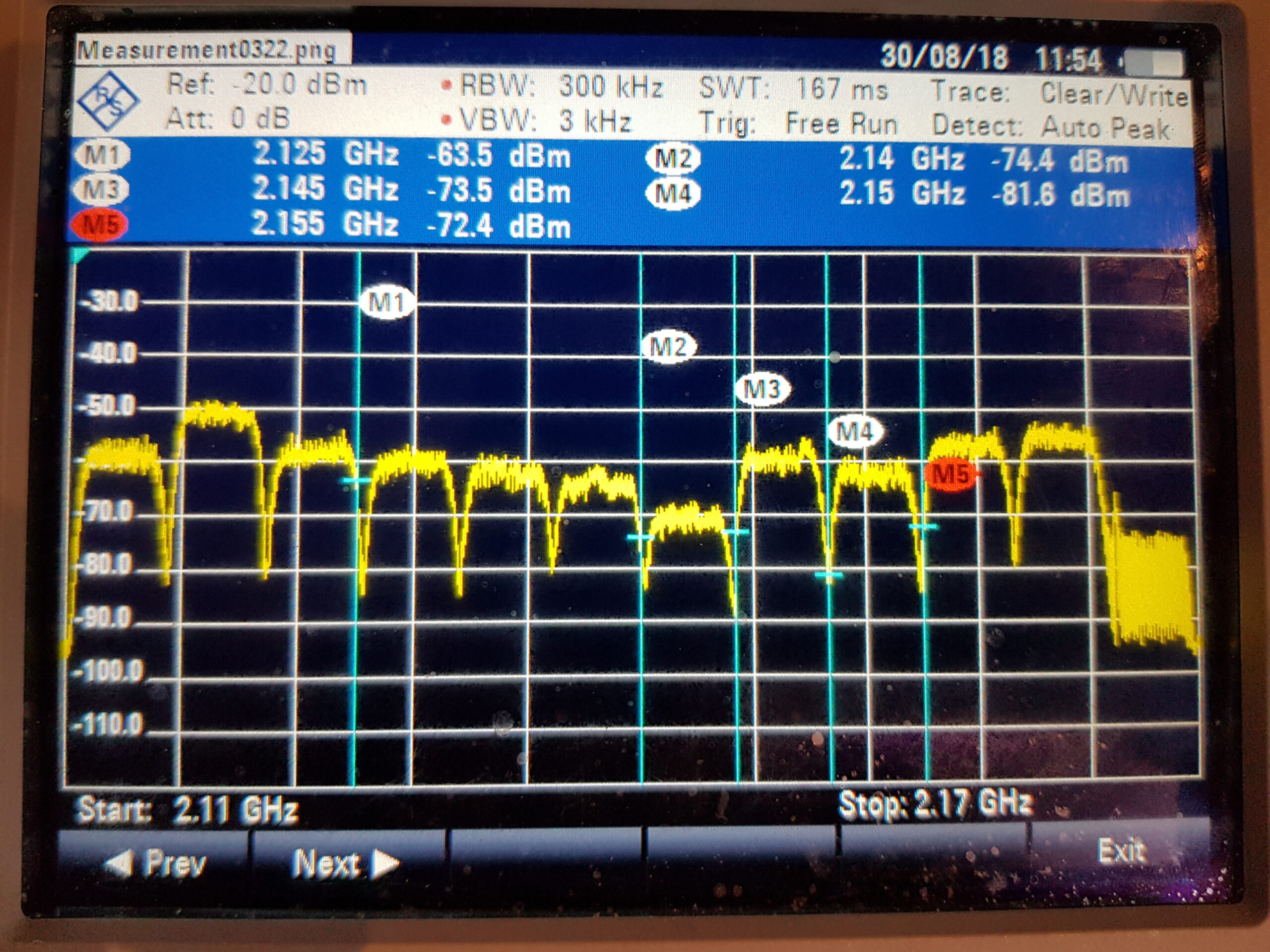
If you do not have a spectrum analyser, you can use your Samsung Galaxy phone with the app “Network Cell Info Lite” installed on it.
You can use this app to measure the signal power of each antenna, when you are standing 2 meters away from the antenna. This method is not as accurate, but is better then doing no test at all.


